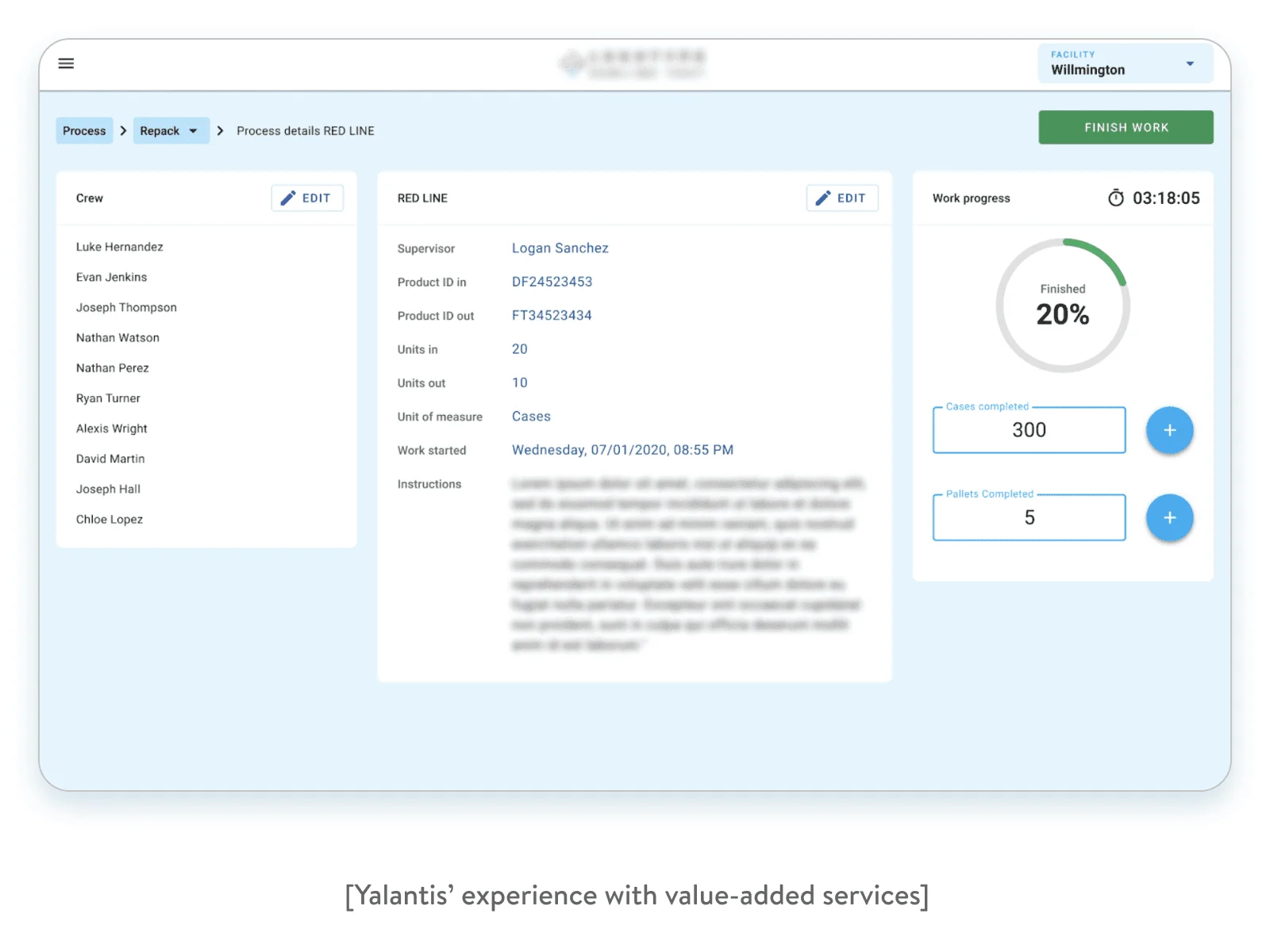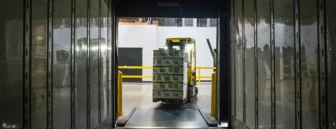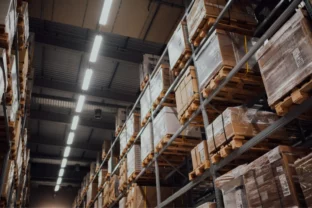Because third-party logistics (3PL) customers are increasingly using advanced electronic systems, the need for large inventories is decreasing. This trend and the need for competitive advantages are pushing 3PL providers to find new revenue sources, which are often value-added services (VASs).
Consequently, more and more 3PL companies are giving greater attention to identifying and providing unique customer-oriented services to stand out among competitors.


Increasing provision of VASs among 3PL market players
The top logistics market players have long recognized the value of value-added services.
Since April 2020, Universal Logistics Holdings Inc. has expanded its number of value-added programs from 56 to 60 within its contract logistics segment. This has partially led to a 12.1 percent increase in the company’s dedicated transportation load volumes and to better performance during the year.
Kerry Logistics’ international freight forwarding division now generates 48 percent of the company’s revenue thanks to providing value-added warehousing and distribution services.
More and more midsize and smaller 3PL providers are stepping into the game by expanding their value-added services, including packaging, assembly, kitting, and shrink wrapping.
This correlates with the findings of recent research conducted by Adelante SCM and commissioned by Nulogy, which found that 48.5 percent of interviewed logistics executives consider their companies’ value-added services as a “very important” component of their growth strategy. Another 33.3 percent consider VAS “important.”

According to the research, deciding to provide particular services for a 3PL and the approach to their provision is also dictated by strong e-commerce growth. Due to the COVID-19 pandemic, in 2020 online sales reached a volume that hadn’t been expected by logistics experts before 2022.
The pandemic continues and consumers are getting used to buying online. Consequently, digital consumption will keep growing as it’s safe, comfortable, and delivery is done in a timely manner. Consequently, the supply chain domain has been experiencing a shift from brick-and-mortar to e-commerce.
This shift requires logistics companies to develop more multipack capabilities to ensure assortments of stock-keeping units (SKUs) needed by e-commerce businesses.
Online stores rarely close, and warehouse staff often rush orders overnight to ensure next-day delivery. An increasing demand for workers has now become a challenge for warehouse managers.
One of the most effective ways to mitigate the labor shortage is with VAS automation. But despite the widespread use of equipment that simplifies value-added tasks and software systems like warehouse management systems (WMSs) and enterprise resource planning (ERP) systems, logistics companies lack effective VAS software.
This prevents logistics providers from expanding their value-added services and providing personalized customer service.
What hampers VAS digitalization?
In the era of high technology, value-added services are often provided manually, which results in human error and operational messiness. The reason for such inefficiency lies in the mindblowing variety of logistics processes and the particularities of different services.
There’s no ready-made 3PL warehouse software solution capable of accounting for all requirements of each individual value-added service. They can range from temperature requirements and the availability of a conveyor to conditions of order fulfillment.
In fact, even the staff’s uniforms will affect software requirements. For example, a VAS system should consider if your employees wear gloves while working and, if they do, should allow them to easily press buttons on a device to indicate task progress.
The only way to implement such a highly customized system is to build it from scratch. This approach can help you ensure that your software solution:
- is tailored to your and your customers’ specific processes and the characteristics of the goods you process
- is capable of integrating with other software you use
- includes and is capable of expanding all the functionality you need
- provides the most suitable user experience
- is developed in full compliance with relevant regulations
- provides order fulfillment transparency for you and your customers
Before going into detail on how exactly you can digitalize your warehousing VAS, let’s touch upon the most common types of value-added services and their peculiarities. After all, these peculiarities will affect the way you build your VAS software.
Read also: 5 Indicators Your Warehouse Management System Needs Improvement
Warehousing VAS in a nutshell
Value-added services are add-ons to general services that logistics companies already provide to customers. VASs offers 3PL providers endless opportunities to ensure a personalized approach by filling gaps in their customers’ processes.
By saving customers hassle by providing quality service, a 3PL provider doesn’t just earn from the provision of services but also ensures customer loyalty and retention. Using the value-added services of a logistics provider enables a seller to work with one partner to cover all of their supply chain needs.
Software specifics depending on the type of VAS provided
Warehouse VASs might include anything from customized labeling and final assembly to blast freezing. But the provision of each of these services will depend on customers’ specific requirements and should be automated.
For example, a software solution tailored to performing multiple types of packing operations has to let you set fulfillment rules. Based on these rules, order classes, customers’ requirements, in-hand dates, and other factors, such a solution will help you complete packing tasks in the correct order.
Kitting and assembly might be an immensely complicated process. Take for instance a toolbox with 50 items. Some of them may need to be immediately substituted in response to supply chain issues. A software solution has to ensure that such kitting difficulties are easily handled.
For instance, a user might be allowed to just click on an item they need to include in their assemblies and remove it. If a specific item is low in stock, the system might send alerts suggesting a responsible employee order more, remove the item, or replace it.
These examples show that VAS digitalization is a promising step to take for a 3PL company to boost the quality of its value-added services. Let’s view the exact advantages in detail.

Benefits of VAS digitalization
As we’re living in times of uncertainty and economic downturns, it might seem logical for a 3PL company’s management to pause new initiatives like investing in technology. But deciding to postpone digitalization efforts now is likely to be a mistake for a logistics company.
Decreasing investments in digitalization not only prevents a company from fully meeting growing customer needs but puts it further behind the competition. According to research conducted by Adelante SCM and commissioned by Nulogy, 73 percent of supply chain executives plan to raise or are already raising their investments in process digitalization.
The benefits of VAS digitalization stated below also contribute to a logistics company’s revenue growth and improved customer satisfaction.
Improved employee management. Along with contributing to solving the labor shortage problem, VAS automation might help to decrease long working hours and overtime. Proper automation reduces workloads and allows for redirecting released resources. Time tracking implemented within a software solution helps to collect historical data to identify the average time for fulfilling a task and consequently the best and worst employees. This constant data flow will help you implement an impartial employee bonus program that is likely to improve staff productivity scores.
Faster services and fewer errors. Digitalization helps to reduce time wasted on entering data, prevent data loss, and decrease human errors. A software solution can ensure that your supervisors receive notifications on ordered services and help to manage their delivery. Such a smart system considers all operational peculiarities and suggests what to do to avoid mistakes. A well-thought-out, clear design lets employees quickly indicate a task’s progress.
On-demand and flexible service. VAS software might help a logistics company receive information on customers’ orders beforehand. Such a system can also inform supervisors if there’s any shortage of labels, stickers, or machines. With this information, supervisors can make arrangements and organize a team of workers to perform tasks in a timely manner.
Visibility and increased control. If VAS software is integrated with a customer portal, your customers can track the progress of VAS services. You can read about our experience developing a logistics customer portal in one of our case studies. A digital solution might also help you identify workers responsible for poor service and might be able to analyze KPIs. Thereby, you’ll be able to access your success indicators in real time and make informed decisions.
What do you need to take into account to effectively digitalize your VAS operations?

What aspects to consider to build an effective VAS software solution
Keep in mind that the tips presented further in this article are generic. You’ll need to consider essential factors on a case by case basis.
If a company has several warehouses, they’ll need to account for their locations, the regulations and laws they need to comply with, and features of their customers and goods. Logistics companies might have several highly specialized warehouses tailored to customers selling particular types of goods. So make sure you consider the specifics of each of your warehouses when creating VAS software.
Core functionality of VAS software
In practice, providing value-added services with the help of software might look as follows: a supervisor uses a tablet to choose employees responsible for completing a task, select the type of process, and configure it. The process we described is facilitated by fast data entry.
Then the assigned team of workers gets to work, indicating the task progress and checking the remaining work in terms of percentage complete or the number of pallets to load. Core features of such a software solution might be the following.
Features helping to prepare for performing a VAS task:
- Multiple roles (supervisor, employee)
- VAS service selection
- Easy selection and updating of the current team using a drag-and-drop feature
- Ability to schedule/allocate a team for a particular day based on the volume of work to do
- Ability to create a custom VAS process and add specific instructions
- Custom screens for each type of process performed (e.g. repacking, checking, relabelling)
Work execution and service provision:
- Screen for recording the amount of work performed
- Running timer to track task progress
- Ability to state the location where work is performed, select the particular process, and hit start
- Ability of the system to display the process name, specific VAS instructions, and the amount of work already performed (number of pallets loaded, labels applied, etc.)
- If the total amount of work to do has been entered, the system can show the percentage of task completion for the day
- Pause and end work buttons
Rechecking goods before delivery (on demand):
- Custom screen for rechecking goods with a running timer
- Ability to input the number of units, SKUs, etc.
- Ability to scan barcodes
- Button to quickly add or enter the number of cases/pallets checked
Reporting and forecasting:
- Calendar-like screen
- Custom reports
- Dashboards for financial, labor, and materials planning
- Access to historical data
- Ability to forecast and schedule labor based on the amount of work to do, the availability of needed materials, and historical data

More things to consider when building a custom VAS solution
Before getting down to development:
- make sure your software will comply with laws and regulations as well as customer and union requirements
- consider implementing reliable local data storage and offline software features if Wi-Fi coverage at the warehouse location is spotty
- ensure internationalization depending on your employees and customers
The following steps are crucial for quality implementation of custom warehouse software solutions for optimized value-added services:
Decide on software integrations. Most often, VAS software requires integrations with enterprise resource planning systems, 3PL warehouse management systems, customer portals, and billing systems. For example, if your VAS solution is integrated with a customer portal, your customers can track the extent of work performed each time their products arrive at a warehouse. Such tracking might be done via a single dashboard. Integration with a billing system enables a VAS provider to quickly invoice a customer based on provided services.
Diligently work out the design. Thoroughly study your staff’s work processes and working conditions to simplify the software. For example, if your staff wear gloves, make it easy for them to indicate a task’s progress with gloves on. You might place a large + button in the interface to notify the system to switch to the next phase of work, for example. If your staff wear masks, make sure the interface is readable with masks on. Don’t forget to test how user-friendly your design is before deciding on the final variant.
Ensure your software’s scalability. Keep in mind that if your customer base is expanding, you need to ensure your software can account for the specific needs of more and more customers. Building software on the principles of a microservice architecture is an effective approach to make sure your system is scalable, flexible, and ready for upgrades.
Make sure your technology provider is logistics-savvy. If you don’t have your own IT department or want to outsource some parts of development, make sure your technology partner has relevant logistics expertise and experts with a logistics background. This will help you ensure smooth communication, proactive partner contributions, and faster and quality development. At Yalantis, logistics is our strong suit, as proven by multiple complex logistics solutions we have developed.
As your software is ready, make sure you have supporting materials to ensure safe working conditions for employees and the safety of equipment. For instance, make sure tablets used to track task progress are in industrial cases so they won’t break if they fall on the cement floor.
We hope this post has persuaded you of the need to digitalize your value-added services. We’ll gladly help you if you ask us to facilitate your logistics processes.
Rate this article
3.8/5.0
based on 20 reviews






